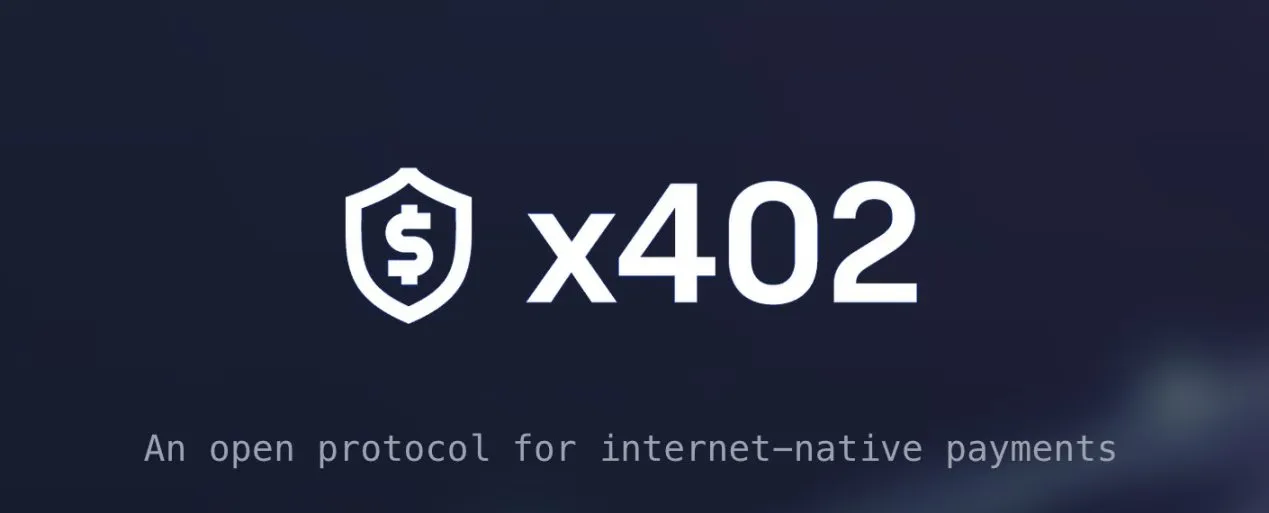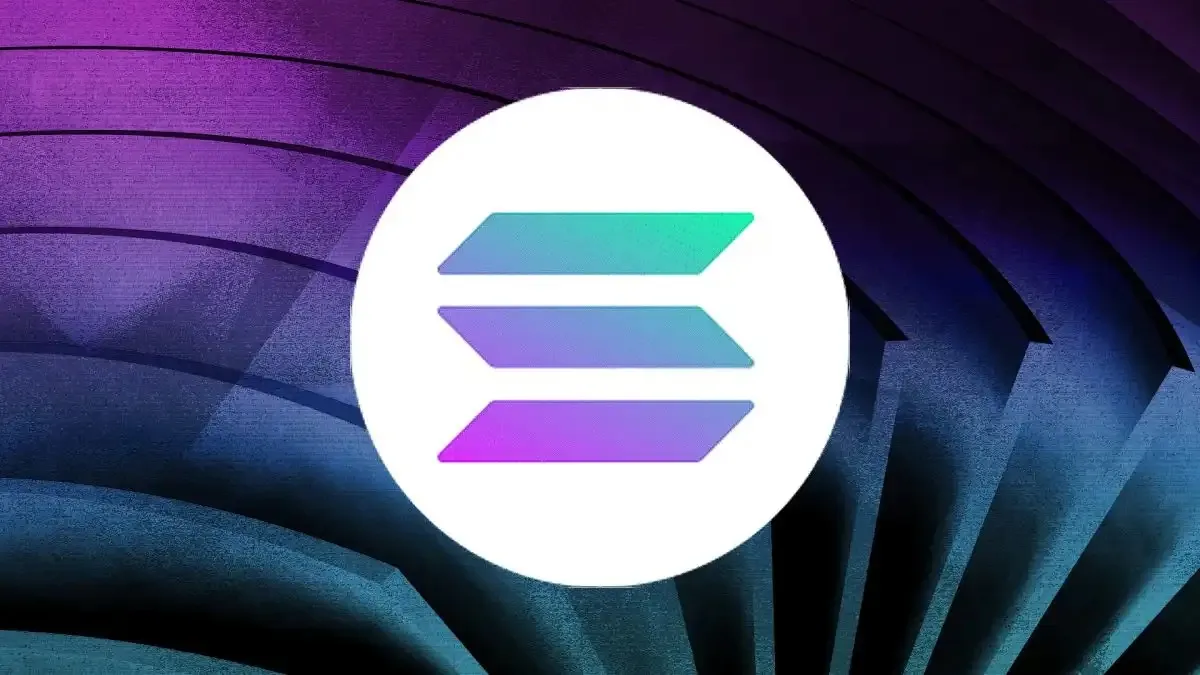PayPal is willing to spend money; how big is the market for the Agentic Internet?
Written by: ChandlerZ, Foresight News
The first act of generative AI has shown us intelligent tools that can chat, write, and draw. However, what truly determines whether it can enter the economic mainstream is not how human-like its responses are, but whether it can independently complete a real transaction, including identifying counterparties, verifying identity and permissions, making automatic payments, recording performance, and triggering arbitration and refunds when necessary. Traditional internet payment and risk control assume that "humans" are in the loop, with SMS verification, manual approval, and customer service handling being the norm. But for high-speed machine-to-machine collaboration, micro-payments at AI Agent frequency, pay-per-call billing, clear profit-sharing, and accountability all require a deeper, more consistent set of public rules.
Around this gap, AI payment has become the core of a new round of infrastructure narrative, which aims to embed identity, permissions, payment, governance, and attribution from temporary agreements at the application layer into a settlement and coordination foundation that anyone can verify. Kite AI has emerged in this context, gaining favor from PayPal and many Wall Street institutions. It is not just adding a payment SDK on existing chains but attempting to integrate Agent passports, native settlement, programmable governance, and transparent attribution into a single execution environment at the chain level, allowing AI Agents to transact with standardized capabilities.
Can crypto + AI usher in true large-scale applications? How big will the market for the next generation of crypto + AI payment infrastructure be? What will the future payment infrastructure look like? The conclusion is not complicated: without verifiable payment and settlement, there is no scalable AI Agent economy. With this payment metric in mind, we start with Kite AI to see what it is and what problems it aims to solve.
The Watershed Moment of AI is Payment
In the past few years, the generative capabilities of AI Agents have overflowed. However, to truly push it into production systems, the key lies in action rather than expression. For instance, automatic ordering, price comparison, invoicing, tracking, and after-sales service—once these actions are linked to fund disbursement, they encounter requirements that traditional payment gateways cannot meet, including authorization at machine frequency, programmable limits and whitelists, cross-platform portable exception handling, and publicly verifiable value attribution. The demand for AI from enterprises has shifted from "can write reports" to "can run closed loops," especially evident in high-frequency scenarios such as e-commerce, subscriptions, travel, SaaS, and data services.
The cost of keeping rules at the application or gateway layer is fragmentation. Each time a merchant is onboarded or a new scenario is added, permissions, limits, risk control, and after-sales processes must be rewritten, leading to non-linear increases in collaboration costs as scale grows. A more reasonable path is to embed verifiable identity, native settlement, programmable governance, and public attribution at the chain level, making them default public goods of the system. This way, AI Agents carry verifiable capabilities rather than a stack of temporary agreements; counterparties only need to verify passports and policies to accept orders; for developers, complexity is unified and migration costs are significantly reduced.
Kite AI has chosen this path of moving down to the foundational level. The project team has long been focused on data and distributed systems, with an engineering orientation to embed complexity into the protocol at once rather than repeatedly patching it at the application end. This also explains its shift from a data foundation to a transaction and trust foundation, making the "money and rules" that AI Agents truly need into underlying capabilities, providing a basis for machine-to-machine transactions.
Kite AI is building the foundational transaction layer for the Agentic Internet, providing unified identity, payment, and governance infrastructure for autonomous intelligent agents. On February 10, 2025, Kite AI launched the AI consensus mechanism PoAI (Proof of AI) L1 sovereign blockchain testnet. According to official data, its testnet v1 surpassed 230,000 wallet connections in less than 70 hours and exceeded 2.5 million AI inference calls.
In September 2025, Kite AI announced the completion of a total of $33 million in financing, with the latest Series A round amounting to $18 million, led by PayPal Ventures and General Catalyst. The funding will be used to accelerate Kite AI's advancement in building the Agentic Internet, and integration with Shopify and PayPal has officially gone live, allowing any PayPal or Shopify merchant to be discovered by AI shopping agents simply by accessing through the Kite Agent App Store. All transactions are settled on-chain, with full traceability, using stablecoins and programmable permissions.
An L1 Built for Agents: How to "Make Machines Pay"
To ensure that AI Agents move beyond demonstrations and into real business, payment and trust must become system defaults rather than external accessories. This is also the starting point for Kite AI's choice to reconstruct from the ground up, consolidating who can do what, how to pay, what to do in case of errors, and how to distribute value into a single execution environment. Only when identity, rules, and funds are constrained by the same level of certainty in the same ledger can the authorization boundaries of Agents avoid being reinterpreted in different intermediary layers, and transaction evidence can be reused across scenarios and counterparties. Therefore, Kite AI is pursuing an EVM-compatible sovereign chain route, with Kite AIR (Agent Identity & Resolution) at its core, embedding the key primitives of trust and payment into L1.
Agentic Payment Layer: Making Spending and Accountability System Defaults
In this architecture, KitePass is the first cornerstone. It is not just an image of a document but an executable on-chain passport. It clearly outlines the Agent's creator, the authorized scope of capabilities, budget limits and whitelists, available time windows, and under what circumstances multi-signature or manual approval is required. Counterparties do not need to repeatedly conduct private risk control before accepting orders; they only need to verify whether the passport and rules are compliant to proceed.
For Agents, minimal authorization is the default state, thereby reducing systemic risk. Around the high-frequency demands on the payment side, Kite AI further makes Micropayment a default in the ledger. It handles a large number of small, dense charge requests through state channels and dedicated payment channels, achieving millisecond-level confirmations and low fees, making pay-per-call billing, micro-subscriptions, and streaming payments the norm; only during channel switches, final settlements, and dispute handling does it revert to the main chain, balancing speed and traceability.
To prevent rules from becoming mere paper agreements, Kite AI also introduces session keys and programmable spending policies, creating a unified governance state machine for rate limits, limit breaks, automatic refunds, freezing and unfreezing, and dispute escalation, complemented by on-chain auditing and reputation systems, allowing long-term accumulation of who fulfills contracts and who breaches them into referenceable credit. This set of capabilities together equates to providing a company card + risk control console + reconciliation ledger at the ledger layer. Externally, it offers standardized spending proofs and auditable trails; internally, it provides primitives and policy templates that developers can directly invoke.
Transparent Attribution and Fair Compensation: Writing Who Did the Work into the Same Ledger
Another challenge in the AI Agent economy is determining who did the work and how to distribute the profits. Behind a seemingly simple transaction often lies a symphony of model inference, data interfaces, tool execution, and orchestration of multiple AI Agents. Without credible attribution, profit-sharing relies either on platform adjudication or offline settlements, making it difficult to form long-term incentives. Kite AI's approach is to string together evidence, measurement, distribution, and dispute resolution into a closed loop:
- Evidence: Each call and output leaves a verifiable execution record, clearly stating who, when, and under what rules produced which result.
- Measurement: Weight mapping based on calls, duration, quality, or achievement of results.
- Distribution: Profit-sharing strategies encoded as contracts, automatically splitting at settlement to model providers, data providers, tool providers, and orchestrators.
- Dispute: Quality or attribution disputes enter the governance state machine, triggering reviews, rollbacks, and secondary distributions, with full on-chain traceability.
With this closed loop, participants are willing to make their capabilities available for AI Agents to invoke because the evidence is verifiable, profit-sharing is predictable, and disputes have pathways, rather than relying on platform decisions.
Ultimately, for foundational capabilities to be adopted, they must be productized. Kite AI provides an Agent App Store for merchants and service providers. The Agent App Store is a supply-demand hub that has currently integrated 36 services, covering commonly used capabilities like Shopify, Uber, Masa, and Irys. Any team can publish an Agent for users to directly use; on the merchant side, capabilities, pricing, and SLAs are listed; on the Agent side, the standard path of discovery, invocation, settlement, and traceability is followed.
Compared to other routes of AI × blockchain in the market, Kite AI's narrative is deliberately misaligned. General L2s tend to accommodate AI Agents through account abstraction and plugins, computational networks emphasize decentralized orchestration of inference tasks, and vertical application chains focus on single industry closed loops; Kite AI places AI Agent identity and payment at the center of the system, allowing governance and attribution to close the loop within the same ledger. It does not attempt to replace all components but rather fills in the critical puzzle of how machines can be trusted to spend money, becoming a clearing and coordination layer that other components can rely on.
Imagine an AI shopping Agent placing an order for coffee within a $50 budget under passport constraints, the merchant verifies the passport and allows the transaction, payment is locked in the channel with a "late refund" SLA attached, delivery status is recorded on-chain according to rules, anomalies trigger breaks or refunds, and upon order completion, the contract automatically releases payment and tips, distributing profits to data, model, and tool providers according to the evidence chain, with transaction performance also counted towards the reputation of both the merchant and the AI Agent. Throughout the process, there is no need for customer service intervention; machines autonomously complete economic activities under clear constraints and transparent audits. This is precisely what Kite AI aims to achieve with its L1 built for AI Agents: turning "making machines pay" into a daily occurrence.
x402 as an Entry Point, Kite Lays the Settlement Track for Agent Payments
Recently, x402 has stirred market excitement, and Kite AI serves as the best Layer 1 execution and settlement layer for the x402 protocol and the emerging agent economy. x402 is an internet-native payment standard proposed by Coinbase, centered on making long-idle HTTP 402 (Payment Required) status codes truly functional, allowing web pages and APIs to express "payment required here" directly at the protocol level. Naturally supporting stablecoins, small high-frequency transactions, and low latency, x402 is suitable for AI Agents to buy data, tools, and computing power on-demand, while also enabling Web2 services to connect to on-chain settlements with minimal changes, eliminating the need for multiple hurdles like registration, email, OAuth, or complex signatures.
Following this entry point, the relationship between Kite AI and x402 becomes clear. x402 is responsible for clearly stating "payment required" in the HTTP world and providing an authorization format, but it does not handle who pays, how much can be paid, how to intercept unauthorized actions, how to refund failures, how to arbitrate when SLAs are not met, and how to distribute profits among multiple parties; these runtime settlement and governance issues are precisely what Kite AI addresses at the chain level. From the design phase, Kite AI has natively aligned with x402's payment primitives, making it one of the earliest fully compatible Layer 1 implementations, allowing AI Agents to initiate, receive, and reconcile payments with standardized intent directly; as payment standards for AI Agents increase, this combination of "entry via x402, settlement via Kite AI" will create stronger network effects. Recently, Kite AI announced a strategic investment from Coinbase Ventures, which continues the total financing of $33 million led by PayPal Ventures and General Catalyst. The new funds will support the development of its autonomous AI agent payment infrastructure and collaborate with Coinbase to accelerate the large-scale adoption of the x402 protocol.
To see the full picture, the ecosystem must be strengthened. Kite AI is lowering integration barriers through its App Store, SDK, and templates while running a closed loop of the value chain with modular supply: for example, its incubated Codatta turns high-quality data into verifiable services, charging based on usage and distributing based on contribution, naturally benefiting from x402's standardized charging entry and Kite's settlement distribution capabilities. Codatta previously received joint funding from Kite AI and the Avalanche Foundation's InfraBUIDL (AI) program (a $15 million funding initiative); at the same time, collaboration with Brevis embeds verifiable computation and privacy-friendly auditing into payment and performance paths, allowing every step of evidence, measurement, distribution, and dispute resolution to be verified and reviewed on-chain, thereby reducing enterprises' concerns about compliance and risk control when introducing AI Agent payments. In this way, x402 is responsible for clearly and smoothly stating the need for payment at the internet level, while Kite ensures that the money is paid securely, compliantly, and accountably, and that the resulting value is settled transparently. Together, they represent the standard card payment method for the AI Agent era.
Financing, Community, and Future Potential
Kite AI's total financing to date is $33 million, with the latest Series A round amounting to $18 million, led by PayPal Ventures and General Catalyst, with participation from 8VC, Samsung Next, SBI US Gateway Fund, Vertex Ventures, Hashed, HashKey Capital, Dispersion Capital, Alumni Ventures, Avalanche Foundation, GSR Markets, LayerZero, Animoca Brands, Essence VC, and Alchemy.
Additionally, Kite AI has recently received further strategic investment from Coinbase Ventures, continuing the total financing of $33 million led by PayPal Ventures and General Catalyst.
For a network attempting to support Agent payments, such a shareholder structure releases several signals:
- First, the resources and brand of the payment ecosystem provide a boost for merchant interfaces, compliance discussions, and collaborative pilots;
- Second, leading dollar funds signify the sustained firepower needed for "long-term engineering and business development";
- Third, the synergy of technology/industry capital increases the interconnected space with upstream models and downstream applications.
This is also the source of the market label "PayPal Prince"—not indicating ownership by any particular entity, but rather implying a natural affinity with the payment system.
The validation of usability comes from the scale of the testnet. Since 2025, the network has covered over 17 million users, with approximately 1.7 billion interactions; daily active users have consistently ranged from 2 million to 4 million, demonstrating a high-frequency, low-value, auditable usage structure. These numbers are not single-point peaks but rather a stability validation of the "pay-per-call + programmable governance + channelized settlement combination" under real traffic. In high-concurrency inference and payment scenarios, channels can handle a large number of microtransactions, governance state machines can implement anomaly handling without human intervention, and audit trails can provide evidence for subsequent reviews and profit-sharing.
On the roadmap, Kite AI plans to enter the mainnet phase in Q4 2025, with core deliveries including native stablecoin payments, improvements to Agent ID and trust layers, and continued expansion of the App Store and SDK ecosystem, thickening the supply side of agents as operating entities. The capital structure provides ample throttle for execution. For a Layer 1 centered on payment and trust, such a shareholder combination not only strengthens expectations for interface synergy with the payment ecosystem but also provides sufficient flexibility for engineering and business investments during the mainnet sprint.
The Battle for the Settlement Layer: "Making Agents Spend Safely"
As AI transitions from speaking to acting, payment and settlement are no longer external interfaces but part of the system itself. Kite AI's answer is to consolidate passports (identity/authorization) — payment (native stablecoin) — governance (risk control/arbitration) — attribution (transparent profit-sharing) into chain-level public goods; its challenge is to make this set of capabilities reusable across scenarios, with predictable costs and finality, and interconnectable with existing ecosystems.
If the e-commerce closed loop can run stably, with indicators continuously improving across supply, demand, and health dimensions, combined with interoperability and compliance stability during the mainnet phase, "machines starting to pay" will no longer be a demonstration but will become a default capability of the next generation of the internet. By then, Kite AI will be one of the clearing railways of the Agent economy, invisibly handling payments for you and your Agents, clearing accounts, managing risks, and distributing value appropriately.
免责声明:本文章仅代表作者个人观点,不代表本平台的立场和观点。本文章仅供信息分享,不构成对任何人的任何投资建议。用户与作者之间的任何争议,与本平台无关。如网页中刊载的文章或图片涉及侵权,请提供相关的权利证明和身份证明发送邮件到support@aicoin.com,本平台相关工作人员将会进行核查。




